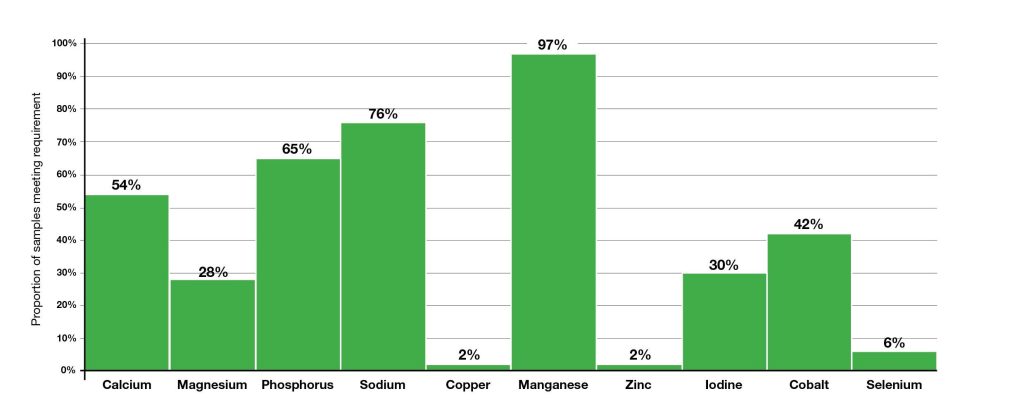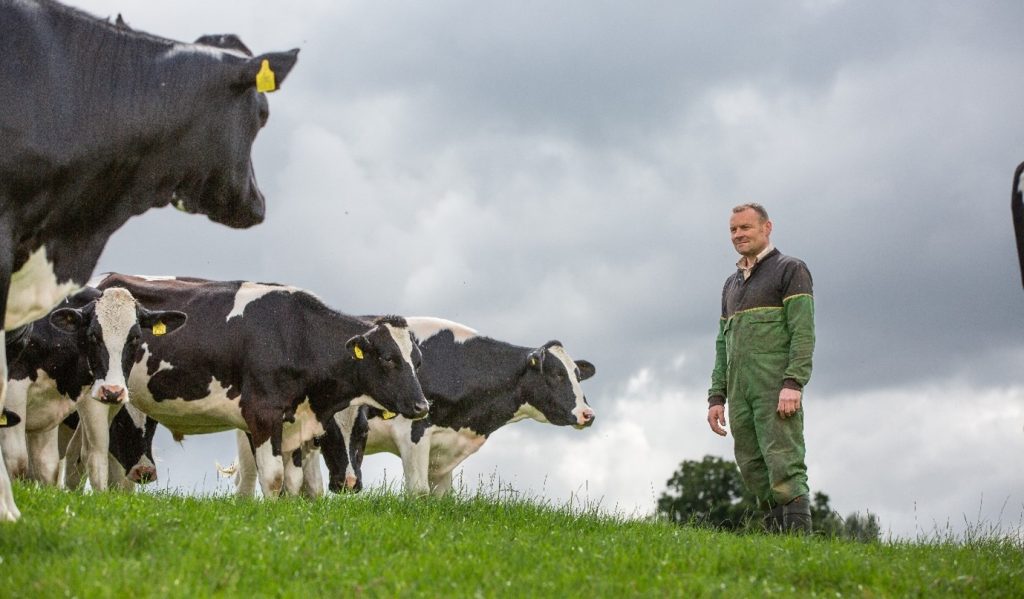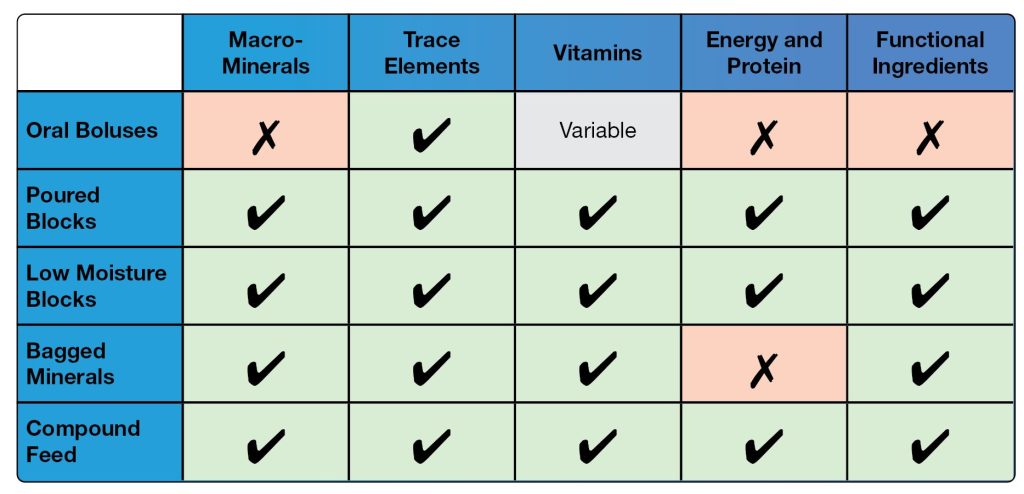The importance of minerals, trace elements, and vitamins in every living function has been long understood. There are fifteen essential macro minerals and trace elements that are ‘required for life’ and vital for animal performance. The agricultural sector has taken huge strides forward in precisely meeting biological requirements at differing levels of livestock productivity through supplementation.
Our understanding is still advancing, with the latest round of recommendations from the National Academies of Sciences, Engineering, and Medicine (NASEM) as recent as 2021. Possibly most notable, is our increased understanding of absorption levels within the animal. Specifically, we now know that ingested minerals and trace elements are not necessarily utilised, depending on various factors.
Our technology is still advancing, bringing the farming sector more efficient and effective supplementation solutions. In the 1970’s, scientists began the development of chelated minerals. These minerals are combined with an organic molecule, often an amino acid, and have been shown to be more efficient than inorganic minerals in meeting the nutritional needs of farm animals. Manufacturers have developed an array of proactive and remedial options, most common being: bagged minerals, compound feeds, boluses, feed buckets, low moisture blocks, compressed blocks, drenches, administered pastes, and liquid supplementation.
With all these options available, trawling through the mass of information to make the most suitable and sustainable choice can be difficult and time consuming. Dr Richard Wynn, Head of Technical at Carrs Agriculture, offers a balanced viewpoint on the most commonly used methods of ruminant supplementation.
Research points to deficiency
As we’ve touched on already, minerals, trace elements and vitamins play a multitude of vital roles in bodily functions including structural (i.e. influencing movement and blood cell production), physiological (i.e. influencing cellular uptake), catalytic (i.e. influencing speed of biological reactions) and regulatory (i.e. influencing cell replication).
Scotmin Nutrition (A Carrs Agriculture company) routinely collect and analyse samples of grass silage, using the results to inform the formulation of custom mineral blends. On reviewing 262 samples sent between August 2023 and May 2024, some clear deficiency patterns can be observed.

Looking first at the trace element levels, copper, zinc, and selenium were deficient in most samples. Iodine and cobalt were found at the required levels in only 30% and 42% of samples respectively. Manganese is less likely to be a problem, particularly in heavier and more acidic soils, though it’s absorption can be low and impacted by the presence of iron.
Even the macro minerals, usually perceived to be less of a problem than the trace elements, were not available at adequate levels in most samples. Magnesium adequacy was reached by just 28% of samples. And remember that this is just the picture for grass silage: many producers – particularly dairy farms – feed maize silage and/or wholecrop silage with the grass silage. These cereal silages are notoriously low in mineral and vitamin status, reducing supply further. As a rule of thumb, we can see around half the levels of trace elements in cereal silages compared to that of grass silages, compounding any deficiencies further.
There is a clear requirement to offer both growing and lactating animals supplementation.
That said, given the variability from crop to crop, field to field, farm to farm, region to region, and year to year; it is critical that each farm understands the status of their own grass and forage using a reputable laboratory. It’s not generally necessary to routinely analyse straight raw materials, as good datasets exist already, and ‘standard’ values are generally reliable.
Sustainability points to sufficiency
The primary goal of supplementation is to overcome deficiencies in the base diet to meet maintenance and production requirements. Becoming more critical, however, is the goal of overcoming a deficiency without an oversupply. Oversupply will bypass what an animal can absorb or even cause toxicity – in any case oversupply will cost money. Sufficiency and precision is key.
Step 1: Consider what components each delivery method will typically supply:
Step 2: Consider grazing and forage quality
Grazing and forage quality can be defined as the capacity of the grass to nutritionally meet the basic requirements of the animal. It’s important to consider the variable impactors on mineral and trace element levels in grass:
- Weather: Higher rainfall can excel grass growth and effectively ‘dilute’ mineral and trace element levels. It can also cause ‘soil splash’, increasing the prevalence of absorption antagonists.
- Fertiliser: Nitrogen fertiliser will boost yields but will then effectively ‘dilute’ trace element levels due to greater dry matter production. It’s important to add manure back into the soil, as it contains trace elements.
- Sward type: Grasses that incorporate clovers along with certain broad-leaved plants and heathers are almost always richer in nitrogen and protein.
- Soil pH: The optimum availability of most plant nutrients occurs over a small range of soil pH values. Liming can increase the availability of nitrogen, phosphorus, and potassium, and can therefore encourage grass growth and even make grass more palatable to grazing animals. However, increased forage growth can also indirectly dilute trace elements, and over-liming can reduce the uptake of cobalt, copper, selenium, and manganese.
Step 3: Consider productivity levels and practicalities
| KEY FOCUS | PRACTICAL CONSIDERATIONS | |
| REPLACEMENT
HEIFERS |
Immune response to a wide range of conditions and challenges. Daily liveweight gain rates, ‘normal’ fertility, and support for foetal development. | If heifers are grazed away from the farm in the summer and exposed to variable grazing quality, it might be more practical to bolus before turning out. If grazing is not offering adequate macronutrients and the group isn’t visited every day, it might be more suitable to offer buckets or blocks. When housed and fed on silage, its likely more practical to feed a compound or bagged minerals through a TMR. |
| LACTATING
COWS |
Milk production, supporting early to mid-pregnancy, and immune responses to a range of challenges including mastitis, and reproductive health. | In all year round calving systems fed on TMR where there are groups of lows and highs, the most precise means of supplementation is bespoke bagged minerals or compound feeds to suit each groups requirements. In more extensive block-calving systems, where supplementary feeding is less common, it is more viable to offer blanket forms of supplementation, such as in-parlour feed or licks. There’s also liquid mineral feeding, like magnesium chloride in the spring when there is a risk of grass staggers. |
| DRY
COWS |
Foetal development in late pregnancy, and colostrum production at calving. Metabolic health in the transition period, for example reducing the risk of ketosis. | As pregnancy progresses, the requirement for vital nutrients increases, while at the same time the growing foetus is reducing the physical space within the animal for taking in nutrients. In this situation, feeding bagged minerals in TMR, or through compound feed are most common, or 24-hour access to a block with macronutrients included. |
Whatever the form of supplementation is chosen, it’s important to look out for the factors critical to sustainable supplementation:
- Credibility of product research
- Mineral and trace element concentration levels
- Costings with required feeding rates
- Ingredient bioavailability and rate of supply
- Supplementation of multiple forms (risk of overlaps and oversupply)
There is no black and white; right or wrong answer. There is a multiplicity of variants that must be considered, emphasising the importance of frequent analysis and consulting with your advisor when forming a sustainable supplementation strategy.



